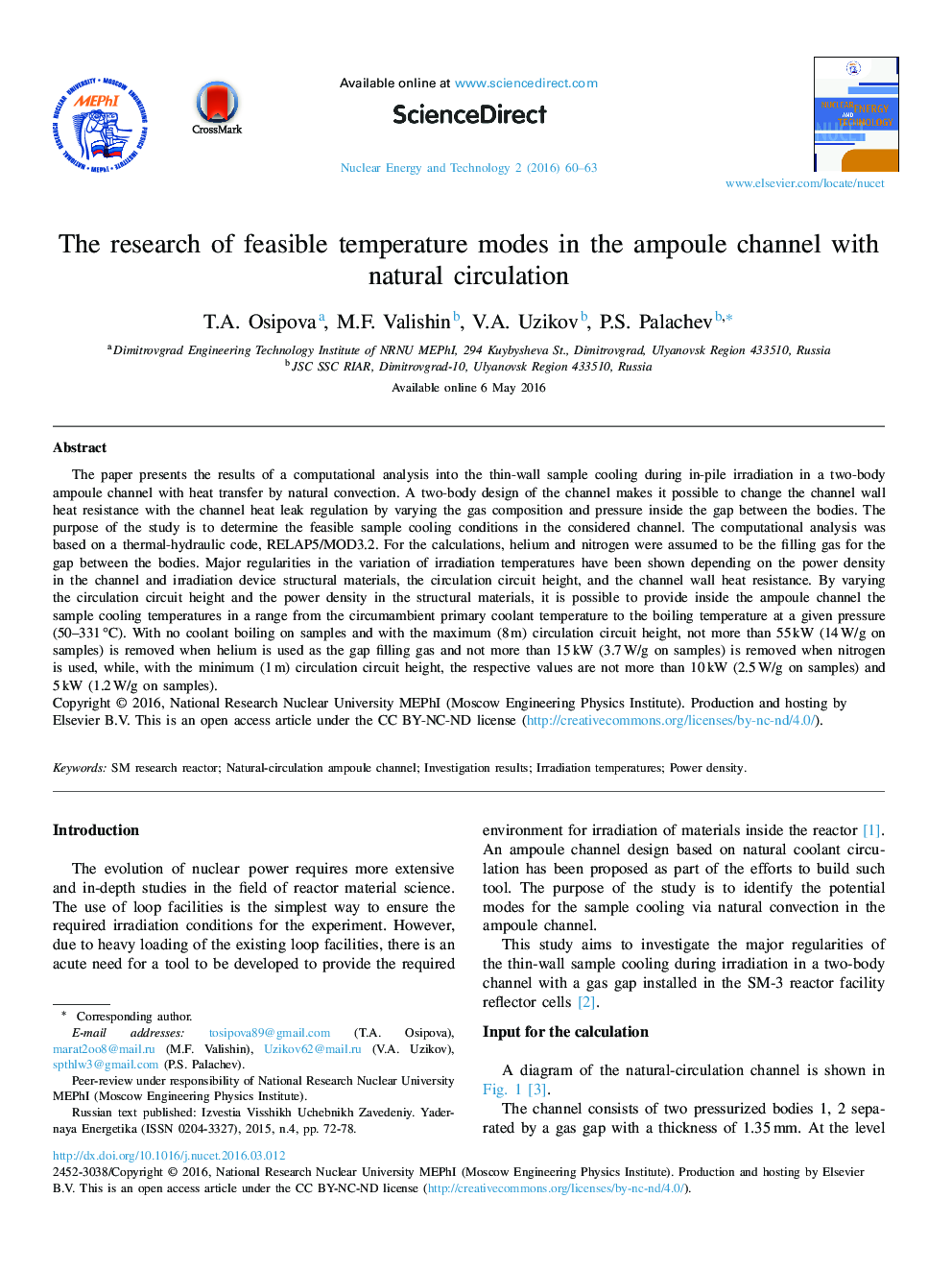| Article ID | Journal | Published Year | Pages | File Type |
|---|---|---|---|---|
| 366561 | Nuclear Energy and Technology | 2016 | 4 Pages |
The paper presents the results of a computational analysis into the thin-wall sample cooling during in-pile irradiation in a two-body ampoule channel with heat transfer by natural convection. A two-body design of the channel makes it possible to change the channel wall heat resistance with the channel heat leak regulation by varying the gas composition and pressure inside the gap between the bodies. The purpose of the study is to determine the feasible sample cooling conditions in the considered channel. The computational analysis was based on a thermal-hydraulic code, RELAP5/MOD3.2. For the calculations, helium and nitrogen were assumed to be the filling gas for the gap between the bodies. Major regularities in the variation of irradiation temperatures have been shown depending on the power density in the channel and irradiation device structural materials, the circulation circuit height, and the channel wall heat resistance. By varying the circulation circuit height and the power density in the structural materials, it is possible to provide inside the ampoule channel the sample cooling temperatures in a range from the circumambient primary coolant temperature to the boiling temperature at a given pressure (50–331 °C). With no coolant boiling on samples and with the maximum (8 m) circulation circuit height, not more than 55 kW (14 W/g on samples) is removed when helium is used as the gap filling gas and not more than 15 kW (3.7 W/g on samples) is removed when nitrogen is used, while, with the minimum (1 m) circulation circuit height, the respective values are not more than 10 kW (2.5 W/g on samples) and 5 kW (1.2 W/g on samples).
